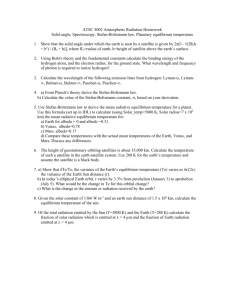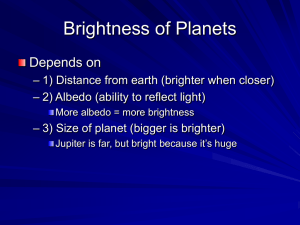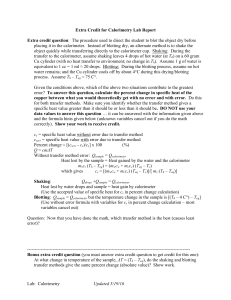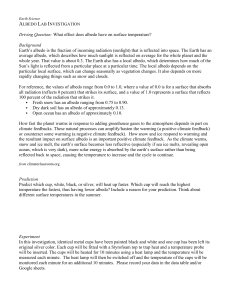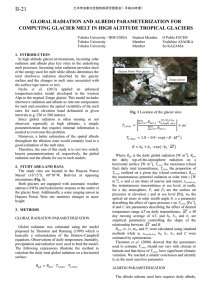Course 12.425. Problem Set 4. ...
advertisement
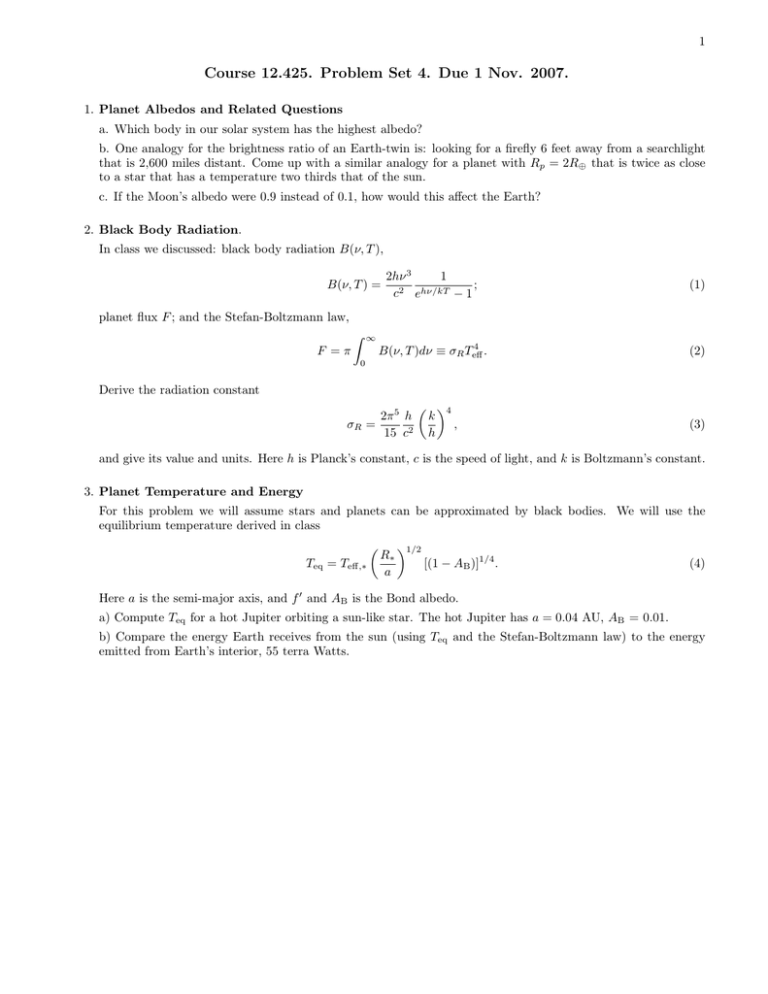
1 Course 12.425. Problem Set 4. Due 1 Nov. 2007. 1. Planet Albedos and Related Questions a. Which body in our solar system has the highest albedo? b. One analogy for the brightness ratio of an Earth-twin is: looking for a firefly 6 feet away from a searchlight that is 2,600 miles distant. Come up with a similar analogy for a planet with Rp = 2R⊕ that is twice as close to a star that has a temperature two thirds that of the sun. c. If the Moon’s albedo were 0.9 instead of 0.1, how would this affect the Earth? 2. Black Body Radiation. In class we discussed: black body radiation B(ν, T ), 2hν 3 1 ; 2 hν/kT c e −1 (1) 4 B(ν, T )dν ≡ σR Teff . (2) B(ν, T ) = planet flux F ; and the Stefan-Boltzmann law, � ∞ F =π 0 Derive the radiation constant 2π 5 h σR = 15 c2 � �4 k , h (3) and give its value and units. Here h is Planck’s constant, c is the speed of light, and k is Boltzmann’s constant. 3. Planet Temperature and Energy For this problem we will assume stars and planets can be approximated by black bodies. We will use the equilibrium temperature derived in class � Teq = Teff,∗ R∗ a �1/2 [(1 − AB )]1/4 . (4) Here a is the semi-major axis, and f � and AB is the Bond albedo. a) Compute Teq for a hot Jupiter orbiting a sun-like star. The hot Jupiter has a = 0.04 AU, AB = 0.01. b) Compare the energy Earth receives from the sun (using Teq and the Stefan-Boltzmann law) to the energy emitted from Earth’s interior, 55 terra Watts.



